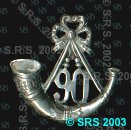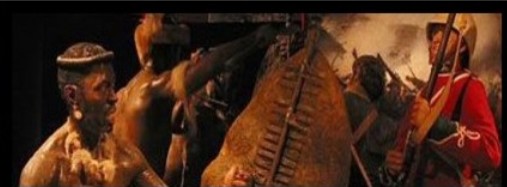| Latest topics | » The Pictorial World - March 15th 1879 Yesterday at 1:13 pm by ben2000 » The lost diary of Pvt James Owen Thu Jul 25, 2024 12:03 pm by miklew » Last of the 24th at Isandhlwana Wed Jul 24, 2024 6:16 pm by John Young » What was the uniform of field marshals/generals in the zulu war? Mon Jul 22, 2024 6:53 am by John Young » Henderson and the NNH at Rorke's Drift  Sat Jul 20, 2024 12:17 pm by SRB1965 » Capt. D. Hayes 1/3rd Regt., NNC Thu Jul 18, 2024 11:11 am by Julian Whybra » The Wrecked Camp Wed Jul 17, 2024 4:33 pm by Julian Whybra » Private N/N John Robert Branch 90th Regiment and his discovered diary Mon Jul 15, 2024 8:53 pm by 1879graves » Private John Scott 24th Regiment a fugitive at large Sun Jul 14, 2024 12:06 pm by 1879graves » 90th foot sgt T. Collins 214 Sun Jul 14, 2024 10:57 am by johnman » Baron Von Steitencron Wed Jul 10, 2024 3:10 pm by Julian Whybra » Sgt Joseph Windridge, Defender of Rorke's Drift - Memorial Tue Jul 09, 2024 3:15 am by 90th » Writing advice Sun Jul 07, 2024 4:04 pm by Julian Whybra » South Africa 1877-79, 1 clasp, 1877-8-9 (4389 Fr. Sergt. S. Smith. O/2. Bde. R.A.) Sun Jul 07, 2024 9:30 am by rai » The trashing of the Zulu monument to the brave warriors at Isandlawana March 12, 2024 has been blamed on scrap metal scavengers. Thu Jul 04, 2024 7:41 pm by ADMIN» The Goodwill Zulu Festival: Celebrating the Welsh and KwaZulu Natal Shared Heritage. Thu Jul 04, 2024 7:27 pm by ADMIN» Any nominal role of G Coy 2/24th regiment  Thu Jul 04, 2024 11:18 am by Wayne » Bassage Diary Thu Jul 04, 2024 9:31 am by Julian Whybra » Prior to Sihayo's Kraal  Thu Jul 04, 2024 9:19 am by 90th » British Fort Locations Thu Jul 04, 2024 3:40 am by 90th » Sergeant 1064 Tom Hick / Hicks G Company 2/24th Regiment Wed Jul 03, 2024 11:05 am by Julian Whybra » A Hungarian soldier in the Zulu War (?) Fri Jun 28, 2024 2:31 pm by Mr M. Cooper » Private 25B/279 Henry Sears Bugler E Company 24th Reg. KIA Isandlwana Thu Jun 27, 2024 1:07 pm by gardner1879 » Hamilton Browne's birthday Fri Jun 21, 2024 9:22 am by Julian Whybra » Zulu "Corps" Thu Jun 20, 2024 6:01 pm by Hobbes » Army Pay Department Personnel Thu Jun 20, 2024 11:49 am by Julian Whybra » Ntshingwayo birth date Sun Jun 16, 2024 11:37 am by Hobbes » Zibhebhu and Cetshwayo's family Wed Jun 05, 2024 9:11 pm by Julian Whybra » Smith's Store/Hotel Wed Jun 05, 2024 6:06 pm by Julian Whybra » Corporal James Frowen Williams F Company.  Tue Jun 04, 2024 5:20 pm by Julian Whybra » Shaka iLembe Sat Jun 01, 2024 1:27 pm by Jon84 » Bugler 1415 Thomas Finn / Flin 90th Regiment  Sat May 25, 2024 11:28 am by johnman » Inspector-General Evelyn Richard Hugh Pollard Tue May 14, 2024 10:13 am by ADMIN» Alfred Fairlie Henderson photographs. Sat May 11, 2024 8:01 am by Julian Whybra » Fairlie's Native Police Thu May 02, 2024 9:12 pm by Hobbes |
| July 2024 | | Mon | Tue | Wed | Thu | Fri | Sat | Sun |
|---|
| 1 | 2 | 3 | 4 | 5 | 6 | 7 | | 8 | 9 | 10 | 11 | 12 | 13 | 14 | | 15 | 16 | 17 | 18 | 19 | 20 | 21 | | 22 | 23 | 24 | 25 | 26 | 27 | 28 | | 29 | 30 | 31 | | | | |  Calendar Calendar |
|
| Top posting users this month | |
| New topics | » The Pictorial World - March 15th 1879 Yesterday at 1:13 pm by ben2000 » The lost diary of Pvt James Owen Thu Jul 25, 2024 12:03 pm by miklew » Last of the 24th at Isandhlwana Wed Jul 24, 2024 5:53 pm by miklew » What was the uniform of field marshals/generals in the zulu war? Sun Jul 21, 2024 12:30 pm by darthvaix » Henderson and the NNH at Rorke's Drift  Fri Jul 19, 2024 1:29 pm by SRB1965 » Capt. D. Hayes 1/3rd Regt., NNC Wed Jul 17, 2024 10:52 pm by Julian Whybra » The Wrecked Camp Sun Jul 14, 2024 8:51 am by 61MECH » The trashing of the Zulu monument to the brave warriors at Isandlawana March 12, 2024 has been blamed on scrap metal scavengers. Thu Jul 04, 2024 7:41 pm by ADMIN» The Goodwill Zulu Festival: Celebrating the Welsh and KwaZulu Natal Shared Heritage. Thu Jul 04, 2024 7:27 pm by ADMIN |
| Zero tolerance to harassment and bullying. | |
Due to recent events on this forum, we have now imposed a zero tolerance to harassment and bullying. All reports will be treated seriously, and will lead to a permanent ban of both membership and IP address.
Any member blatantly corresponding in a deliberate and provoking manner will be removed from the forum as quickly as possible after the event.
If any members are being harassed behind the scenes PM facility by any member/s here at 1879zuluwar.com please do not hesitate to forward the offending text.
We are all here to communicate and enjoy the various discussions and information on the Anglo Zulu War of 1879. Opinions will vary, you will agree and disagree with one another, we will have debates, and so it goes.
There is no excuse for harassment or bullying of anyone by another person on this site.
The above applies to the main frame areas of the forum.
The ring which is the last section on the forum, is available to those members who wish to partake in slagging matches. That section cannot be viewed by guests and only viewed by members that wish to do so. |
| Fair Use Notice | | Fair use notice.
This website may contain copyrighted material the use of which has not been specifically authorised by the copyright owner.
We are making such material and images are available in our efforts to advance the understanding of the “Anglo Zulu War of 1879. For educational & recreational purposes.
We believe this constitutes a 'fair use' of any such copyrighted material, as provided for in UK copyright law. The information is purely for educational and research purposes only. No profit is made from any part of this website.
If you hold the copyright on any material on the site, or material refers to you, and you would like it to be removed, please let us know and we will work with you to reach a resolution. |
| | | Ammunition boxes |  |
|
+2Saul David 1879 old historian2 6 posters | | Author | Message |
|---|
old historian2

Posts : 1093
Join date : 2009-01-14
Location : East London
 |  Subject: Ammunition boxes Subject: Ammunition boxes  Tue Mar 10, 2009 8:35 pm Tue Mar 10, 2009 8:35 pm | |
| Is there any truth in that the, ammunition boxes were screwed shutt, and there were not enough screw drivers at hand to open them.
Ian Knight has provided evidence that ammunition was getting supplied to the firing lines, if this is the case was the ammunition box theory a myth.
Cheers
Old Historian2 |
|   | | Saul David 1879
Posts : 527
Join date : 2009-02-28
 |  Subject: Re: Ammunition boxes Subject: Re: Ammunition boxes  Tue Mar 10, 2009 8:52 pm Tue Mar 10, 2009 8:52 pm | |
| Ian Knight may have provide evidence, but evidence was available at the time. The film Zulu Dawn implys that the battle was lost mainly due to the quarter-master (Bloomfield) and his failure to provide ammunition to other regiments,and the idea of ammunition boxs being screwed down and not being able to open them without the aid of a screwdriver.
See below (Eye witness account)
MEMORIES OF FORTY-EIGHT YEARS SERVICE
British General Sir Horace Lockwood Smith-Dorrien is famous for his part in two famous events; the Battle of Isandhlwana in 1879, and the Battle of Le Cateau in 1914. At Isandhlwana, he was one of only five soldiers to survive the Zulu Army's envelopment of an invading column of British troops.
"I will mention a story which speaks for the coolness and discipline of the regiment. I, having no particular duty to perform in camp, when I saw the whole Zulu Army advancing, had collected camp stragglers, such as artillerymen in charge of spare horses, officers' servants, sick, etc., and had taken them to the ammunition-boxes, where we broke them open as fast as we could, and kept sending out the packets to the firing-line. (In those days the boxes were screwed down and it was a very difficult job to get them open, and it was owing to this battle that the construction of the ammunition-boxes was changed.)"
"When I had been engaged at this for some time, and the 1/24th had fallen back to where we were, with the Zulus following closely, Bloomfield, the Quartermaster of the 2/24th, said to me in regard to the boxes I was then breaking open, " For heaven's sake, don't take that, man, for it belongs to our Battalion." And I replied, " Hang it all, you don't want a requisition now, do you ?"
S.D |
|   | | 1879graves

Posts : 3379
Join date : 2009-03-03
Location : Devon
 |  Subject: Re: Ammunition boxes Subject: Re: Ammunition boxes  Wed Mar 11, 2009 9:07 am Wed Mar 11, 2009 9:07 am | |
| Hi Guys
Sorry to quote Ian Knights work again, but he covers this subject very well.
The disastrous British defeat at Isandlwana is often attributed to a failure of ammunition on the part of the unit most involved in the defence - the 24th Regiment. This is variously ascribed to the unwillingness of Quartermasters to issue rounds without due paperwork, to the difficulties of opening the ammunition boxes themselves - which were supposedly bound tight with copper bands - and even to a lack of screwdrivers with which to do so.
In fact, any careful analysis of the evidence doesn't support any of these claims. While it is true that some of the Colonial units - those under the independent command of Col. Durnford - did run out of ammunition and have difficulty replenishing their supplies, there is no evidence whatever to suggest that shortage of ammunition influenced in any way the tactical decisions of the officers of the 24th Regiment.
There were huge quantities of ammunition in the camp at Isandlwana - about 400,000 rounds in all. General Lord Chelmsford had taken the 2nd Battalion, 24th Regiment, out on reconnaissance, but left their reserve of ammunition in the camp, with orders that it be made ready to send to him if he requested it. The camp was guarded by the 1st Battalion, 24th, whose reserve supply was in the camp. The ammunition itself was stored in the Mark V ammunition box, which was a stout wooden thing, lined with tin, and held together with two copper bands. Obviously, such boxes were designed to take rough treatment on campaign - no point in them bursting open every time they were dropped - but access to the rounds was via a sliding wooden panel in the centre of the box. This was held in place by just one screw, and in an emergency it could be opened by the highly unorthadox method of giving the edge of the panel a hefty clout. This had the effect of splintering the wood around the screw.
When the battle first began, one of the Staff Officers collected a number of men not engaged in the fighting, and set about ferrying ammunition out to the firing line - this was the standard procedure at the time. One rather over-enthusiastic young officer attempted to requisition the 2/24th's supply, but was sent away with a flea in his ear by the quartermaster, who was quite rightly mindful of his responsibilities to Lord Chelmsford. At that stage, the camp was not in serious danger, and in fact fresh supplies were organised from the 1/24th's reserve. Later, when things started going badly, the 2/24th's supplies were also broached, so that when - at the climax of the battle - the 24th companies abandoned their forward positions and fell back on the tents, they were still firing heavily. The reports of survivors - including half a dozen Zulu eye-witnesses - were unanimous on this point.
Once the Zulus penetrated the British line and over-ran the camp, however, there was no possibility of anyone renewing their supplies. The various groups of 24th - and others - therefore stood back to back and fired off what ammunition they had, after which the Zulu closed in. And therein lies the origin of all those reports which refer to the 24th being 'overwhelmed when their ammunition was expended'. |
|   | | old historian2

Posts : 1093
Join date : 2009-01-14
Location : East London
 |  Subject: Re: Ammunition boxes Subject: Re: Ammunition boxes  Wed Mar 11, 2009 2:23 pm Wed Mar 11, 2009 2:23 pm | |
| Reference is made here to the ammunition boxes being smashed open.
Colonel Dunford realised that his men were running out of ammunition and sent several riders back to the camp with urgent requests for supplies. They were unable to locate their allocated supplies and returned empty handed. As ammunition was not forthcoming, Dunford requested a volunteer to warn Pulleine of the situation. With no volunteers forthcoming, Dunford had not choice but to withdraw back to the main camp. As Dunford ordered his men to retreat, G company’s position was left exposed. The company was swiftly overwhelmed by several thousand Zulus.
Right across the British line the defenders were beginning to run low on ammunition. Each infantryman at the start of the battle had been equipped with four packets of ten bullets each and a further thirty rounds loose in their canvas expense bags. Although supply commissars had been attempting to maintain sufficient supplies, after half an hour many soldiers began to yell for more ammunition. The ammunition boxes had a sliding lid that was secured by a single two inch screw. As screw-drivers were in short supply, lids were smashed open with rifle butt and rocks. However, this trickle of ammunition was not sufficient to meet the ever increasing demands that were now flooding in from all sections of the British line.
Saul David, Zulu: the Heroism and Tragedy of the Zulu War of 1879 (London, 2004)
David Rattray’s Guidebook to the Anglo-Zulu War Battlefields, ed. Dr. Adrian Greaves (Barnsley, 2003)
Ian Knight, Rorke’s Drift 1879 (Oxford, 1996)
Adrian Greaves, Crossing the Buffalo: the Zulu war of 1879 (London, 2005)
Adrian Greaves, Rorke’s Drift (London 2002
Cheers
Old Historian 2 |
|   | | Saul David 1879
Posts : 527
Join date : 2009-02-28
 |  Subject: Re: Ammunition boxes Subject: Re: Ammunition boxes  Wed Mar 11, 2009 2:46 pm Wed Mar 11, 2009 2:46 pm | |
| Extract from the Court of Inquiry held to take evidence regarding the disastrous affair of Isandlwana
Captain Essex's Evidence. Rorke's Drift, January 24, 1879.
The companies 1st Battalion 24th Regiment first engaged were now becoming short of ammunition, and at the request of the officer in charge I went to procure a fresh supply with the assistance of Quartermaster 2nd Battalion 24th Regiment and some men of the Royal Artillery. I had some boxes placed on a mule cart and sent it off to the companies engaged, and sent more by hand, employing any men without arms. I then went back to the line, telling the men that plenty of ammunition was coming.
S.D |
|   | | sas1

Posts : 627
Join date : 2009-01-20
Age : 46
 |  Subject: Re: Ammunition boxes Subject: Re: Ammunition boxes  Wed Mar 11, 2009 10:00 pm Wed Mar 11, 2009 10:00 pm | |
| Debate persists as to how and why the British lost the battle. Well-equipped and well-trained British soldiers could fire 10 rounds a minute. Even assuming a poor strike rate, 1,000 men should in theory have been able to inflict 25,000 casualties in a few minutes against an enemy only equipped with spears and clubs, but the ferocity of the attack meant that all the rounds required could not be fired in time.
The initial view, reported by Horace Smith-Dorrien.
General Sir Horace Lockwood Smith-Dorrien, Order of the Bath, Order of Saint Michael and Saint George, Distinguished Service Order, Order of the Bath, Aide de Camp was a Britain soldier and commander of the British II Corps of the BEF during th...
, was that the British had difficulty unpacking their ammunition boxes fast enough and that the quarter-masters were reluctant to distribute ammunition to units other than their own. The lack of ammunition caused a lull in the defence and a subsequent rout. (In subsequent engagements with the Zulu, the ammunition boxes were unscrewed in advance for rapid distribution.)
Donald Morris in The Washing of the Spears argues that the men, fighting too far from the camp, ran out of ammunition, starting first with Durnford's men who were holding the right flank and who had been in action longer, which precipitated a slowdown in the rate of fire against the Zulus. This argument suggests that the ammunition was too far from the firing line and that the seventy rounds each man took to the firing line was not sufficient.
Shortage of ammunition and difficulty in unscrewing the boxes have been said to be unlikely as the units were experienced troops who had seen action before. It has been demonstrated that it was easy to open the ammunition boxes with the butt of a rifle and amount of ammunition used is evidenced by the number of ring-pulls for the inner metal lids that have been found at the site.
Another factor was that the Martini-Henry rifles were prone to jamming because of the heat generated by repeated firing. The gunpowder residues in barrels also critically reduced the precision tolerances of the weapon after about 25 rounds. Bayonets were the only tool that the soldiers had to extricate the jammed rounds.
sas1
From: absolute astronomy |
|   | | ADMIN

Posts : 4354
Join date : 2008-11-01
Age : 65
Location : KENT
 |  Subject: Re: Ammunition boxes Subject: Re: Ammunition boxes  Sat Mar 14, 2009 11:20 am Sat Mar 14, 2009 11:20 am | |
| The disastrous British defeat at Isandlwana is often attributed to a failure of ammunition on the part of the unit most involved in the defence - the 24th Regiment. This is variously ascribed to the unwillingness of Quartermasters to issue rounds without due paperwork, to the difficulties of opening the ammunition boxes themselves - which were supposedly bound tight with copper bands - and even to a lack of screwdrivers with which to do so. In fact, any careful analysis of the evidence doesn't support any of these claims. While it is true that some of the Colonial units - those under the independent command of Col. Durnford - did run out of ammunition and have difficulty replenishing their supplies, there is no evidence whatever to suggest that shortage of ammunition influenced in any way the tactical decisions of the officers of the 24th Regiment. There were huge quantities of ammunition in the camp at Isandlwana - about 400,000 rounds in all. General Lord Chelmsford had taken the 2nd Battalion, 24th Regiment, out on reconnaissance, but left their reserve of ammunition in the camp, with orders that it be made ready to send to him if he requested it. The camp was guarded by the 1st Battalion, 24th, whose reserve supply was in the camp. The ammunition itself was stored in the Mark V ammunition box, which was a stout wooden thing, lined with tin, and held together with two copper bands. Obviously, such boxes were designed to take rough treatment on campaign - no point in them bursting open every time they were dropped - but access to the rounds was via a sliding wooden panel in the centre of the box. This was held in place by just one screw, and in an emergency it could be opened by the highly unorthadox method of giving the edge of the panel a hefty clout. This had the effect of splintering the wood around the screw. When the battle first began, one of the Staff Officers collected a number of men not engaged in the fighting, and set about ferrying ammunition out to the firing line - this was the standard procedure at the time. One rather over-enthusiastic young officer attempted to requisition the 2/24th's supply, but was sent away with a flea in his ear by the quartermaster, who was quite rightly mindful of his responsibilities to Lord Chelmsford. At that stage, the camp was not in serious danger, and in fact fresh supplies were organised from the 1/24th's reserve. Later, when things started going badly, the 2/24th's supplies were also broached, so that when - at the climax of the battle - the 24th companies abandoned their forward positions and fell back on the tents, they were still firing heavily. The reports of survivors - including half a dozen Zulu eye-witnesses - were unanimous on this point. Once the Zulus penetrated the British line and over-ran the camp, however, there was no possibility of anyone renewing their supplies. The various groups of 24th - and others - therefore stood back to back and fired off what ammunition they had, after which the Zulu closed in. And therein lies the origin of all those reports which refer to the 24th being 'overwhelmed when their ammunition was expended'. The Ammunition Boxes at Isandlwana [You must be registered and logged in to see this image.]Source: [You must be registered and logged in to see this link.] |
|   | | old historian2

Posts : 1093
Join date : 2009-01-14
Location : East London
 |  Subject: Re: Ammunition boxes Subject: Re: Ammunition boxes  Mon Mar 16, 2009 10:02 am Mon Mar 16, 2009 10:02 am | |
| Came across this.
The initial view, reported by Horace Smith-Dorrien, was that the British had difficulty unpacking their ammunition boxes fast enough and that the quartermasters were reluctant to distribute ammunition to units other than their own. Well-equipped and well-trained British soldiers could fire 10-12 rounds a minute. Even assuming a poor strike rate, 1,000 men should in theory have been able to inflict 25,000 casualties in a few minutes against an enemy only equipped with spears and clubs. The lack of ammunition caused a lull in the defence. In subsequent engagements with the Zulus, ammunition boxes were unscrewed in advance for rapid distribution.
Donald Morris in The Washing of the Spears argues that the men, fighting too far from the camp, ran out of ammunition, starting first with Durnford's men who were holding the right flank and who had been in action longer, which precipitated a slowdown in the rate of fire against the Zulus. This argument suggests that the ammunition was too far from the firing line and that the seventy rounds each man took to the firing line was not sufficient. However, this approach has been all but discounted by modern historians, drawing on detailed surveys of the battlefield in 2001. The "ammunition" explanation, however, still remains a prevalent myth as to why the British were defeated and, certainly, in the immediate aftermath of the battle it was a more palatable excuse for the disaster - brave troops who would have held out had not their ammunition failed - than putting it down to human error on the part of the commanding officers - none of whom anticpated the risk or need for more secure defensive precautions, or whom, once the Zulus had made their presence known, seemed able to take the measures needed to secure the camp.
Cheers
Old Historian2 |
|   | | Guest
Guest
 |  Subject: Re: Ammunition boxes Subject: Re: Ammunition boxes  Sat Feb 27, 2010 1:13 pm Sat Feb 27, 2010 1:13 pm | |
| Dragged this up as was trying to find any references to the dimensions of Ammunition boxes to get some on to make me one.
I have always wondered about the argument that the quartermaster would not issue ammunitions to other regiments particularly Dunfords (implying a racist dimension in the film) - was it not true that the native units were issued with other guns and not the Martini - therefore requiring another type of ammunition than what was available from the 24th quatermaster? |
|   | | 90th

Posts : 10890
Join date : 2009-04-07
Age : 68
Location : Melbourne, Australia
 |  Subject: Ammunition Boxes. Subject: Ammunition Boxes.  Wed Mar 03, 2010 12:29 am Wed Mar 03, 2010 12:29 am | |
| hi okko
Think you may like this .
The ammunition boxes are 20 1/2 inch long , 71/2 wide , 7 1/2 tall . Made from Teak or Mahogany.
cheers 90th. |
|   | | | | Ammunition boxes |  |
|
Similar topics |  |
|
| | Permissions in this forum: | You cannot reply to topics in this forum
| |
| |
| |
